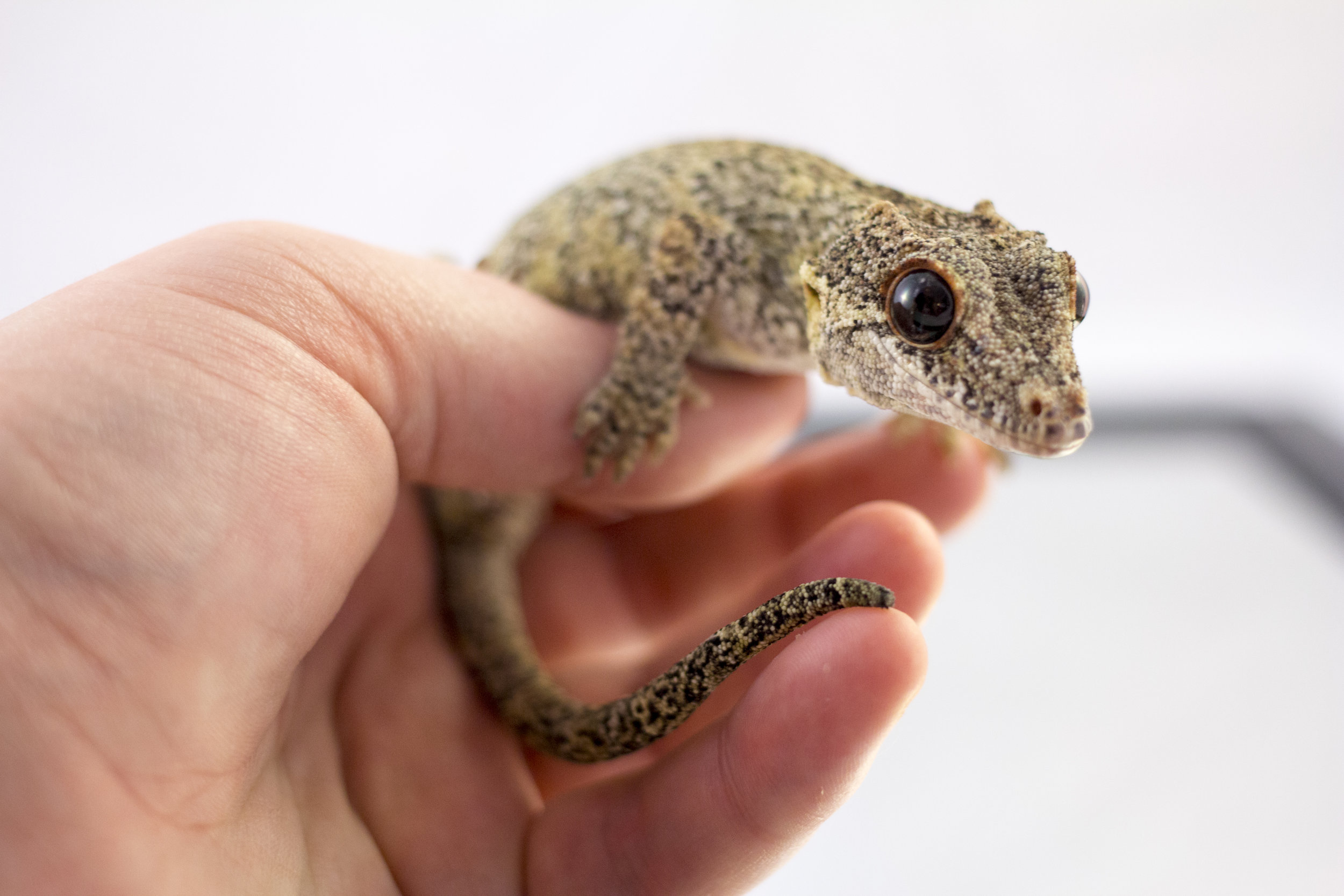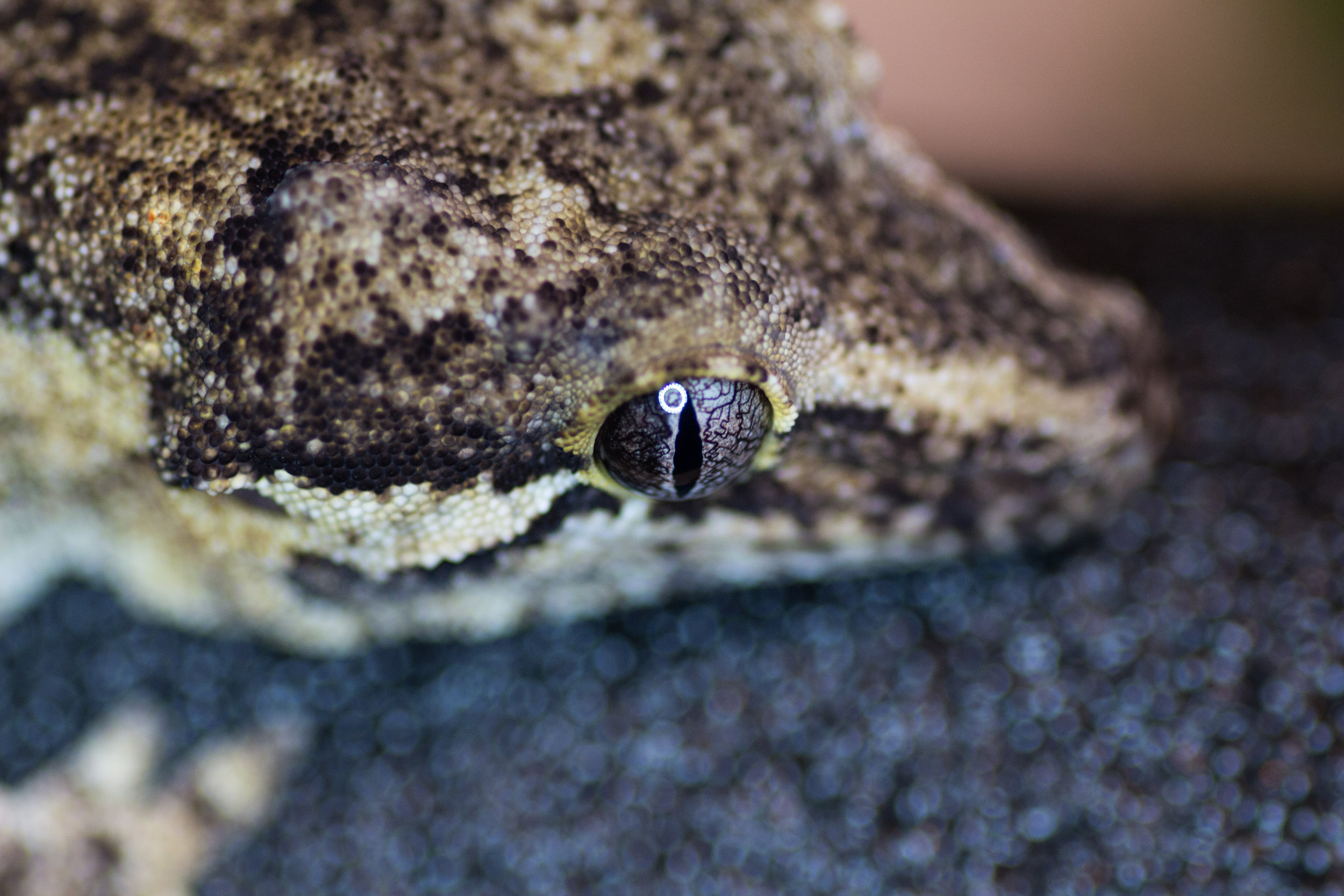Phantom Gargoyle Project
In 2014, I was on a mission. I attended my first Atlanta Repticon knowing that I wanted to work with morphology in geckos. The creatures had drawn me in from a young age, and I was excited to get started with the crested breeding pair I had purchased a few months prior. However, I was looking to expand my collection and work with other types of geckos. While many species appealed to me, it was a trio of gargoyles from my good friends at Kawaii Reptiles that caught my eye. I’ll never forget my first time seeing Desdemona and learning about “the Phantom eye.” I had an undeniable interest in this morph and, ten years later, I’m still excited to share my process of exploring it.
In my process, I’ve excitedly documented the transitions I’ve found in gargoyles with the Phantom eye gene.
Below, you’ll find my photographs of one of my breeders, Nox, and her transition into Phantom-hood.
This photo is from the first day that we received Nox. Her eyes were changing and I knew she was going Phantom.
This image is of Nox two weeks later. Her eyes were slowly transitioning to full Phantom eyes.
Nox completed the transition on her left eye entirely after only one month. Interestingly, her right eye was slower to progress through the transition.
The above transformation seems to be the average for many of my Phantom eyed gargoyles. However, I have other individuals that manifest the Phantom eye gene in an entirely different way. Nox’s Phantom eye came about in a sort of “windshield wiper effect”: from one side of the eye to the other. In contrast, one of my older males began to transition from the very center of his eye to the pupil and expand outward. Additionally, I’ve witnessed a male go from fully Phantom-eyed to entirely normal eye appearance between sheds.
In my experience, it seems that the gene itself manifests around the 2-3 year mark, but I’ve personally witnessed some outliers. There are some individuals that transition as late as 10 years as well as some that exhibit the Phantom eye gene as early as 6 months.











